Identify and Attract a Long-Tailed Skipper Butterfly
Updated: Aug. 02, 2023
These little fliers are more colorful than you might first think. Learn how to attract long-tailed skippers to your butterfly garden.
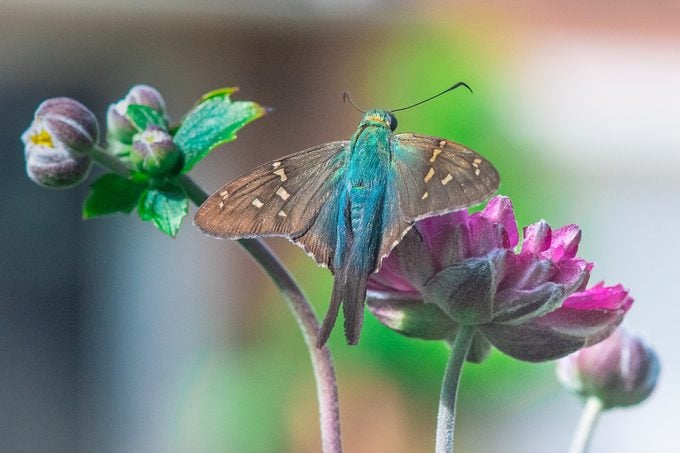
The gorgeous long-tailed skipper will fool you at first. Seeing them in flight or from the side, you expect these little darting creatures to be a dull brown, with nothing much to set them apart except their long tails. But when you see a long-tailed skipper at rest, you’ll see the beautiful blue coloration that makes them such delightful butterflies to follow and photograph.
Meet the vast (and fast!) skipper butterflies.
Is a Long-Tailed Skipper a Moth or a Butterfly?
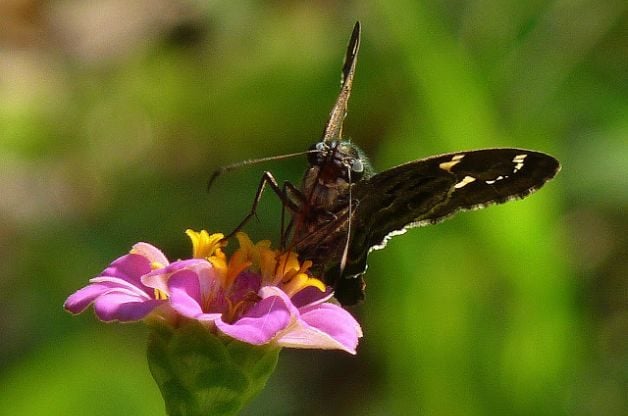
It’s understandable if your first reaction to a long-tailed skipper was, “Is that a butterfly or a moth?” They fly during the day like butterflies, but have some characteristics that seem to set them apart from other butterflies. Scientists have generally compromised by declaring skippers to be a third category, somewhere between butterflies and moths. To the amateur butterfly gardener, though, it makes little difference.
Learn how to identify a red-spotted purple butterfly.
Range and Host Plants
You can find long-tailed skippers (Urbanus proteus) in much of the Eastern and Southern U.S. and throughout the New World tropics. Their host plants (the plants that caterpillars eat) are those in the legume family, so a vegetable gardener may occasionally find these caterpillars on their green beans or peas.
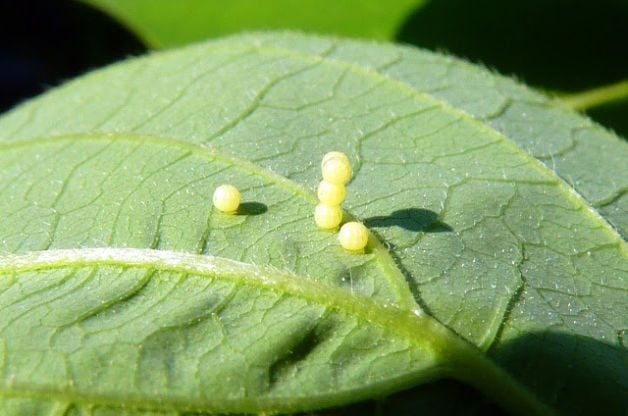
To attract long-tailed skippers to your yard, plant something in the legume family, like beans, peas, beggar’s tick, wisteria, etc. If you are having trouble with caterpillars from these butterflies in your vegetable garden, consider planting a separate patch of beans or peas and moving the caterpillars to these plants instead of harming them. You can draw adult butterflies to small flowers like lantana and pentas, but you’ll find them on just about any good nectar plant.
Transform your yard into a butterfly migration hotspot.
Long-Tailed Skipper Caterpillar
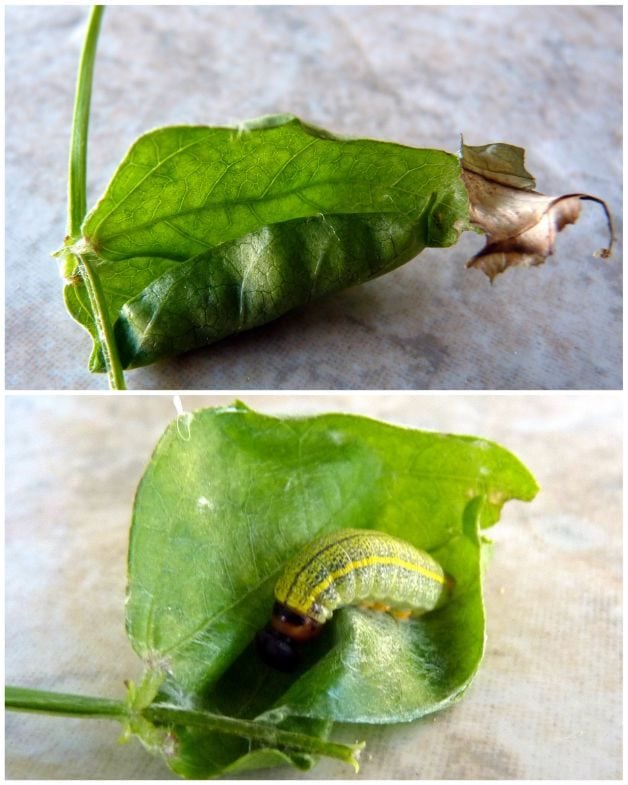
Long-tailed skipper caterpillars are “leaf-rollers.” They take shelter inside leaves by using silk to draw the leaf around them. The caterpillars have hard little heads, making it easy to tell front from back, and bright orange coloration at their tail end. This is one way to tell them apart from their close relative, the Dorantes skipper.
Discover fascinating facts about silver-spotted skipper butterflies.
Ask the Experts
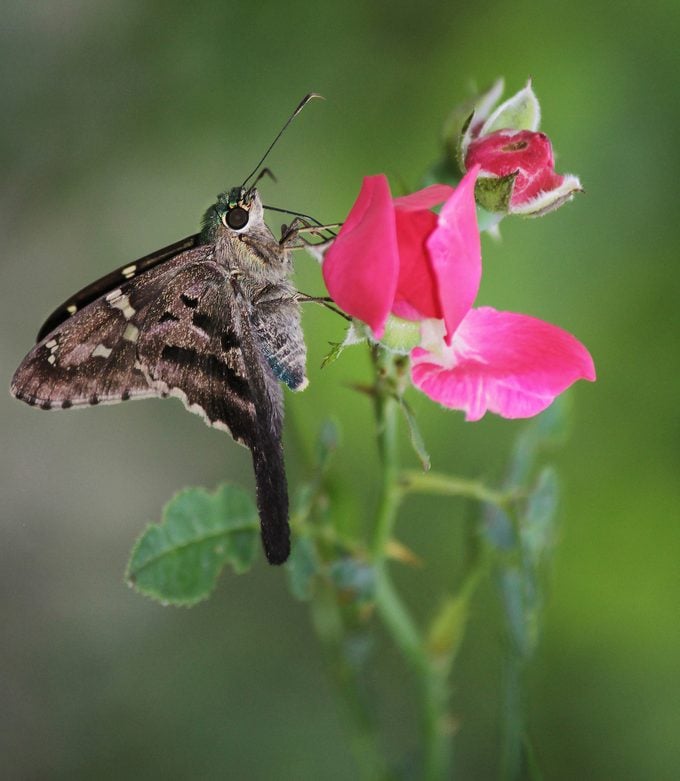
“I thought this backyard visitor (above) was a hummingbird, but when it settled on the flower, I realized it wasn’t. What is it?” asks Birds & Blooms reader Travis Stelly.
Kenn and Kimberly Kaufman say, “This dusky little gem is called a long-tailed skipper. The skippers make up a very distinctive group of butterflies, mostly small with stout bodies and very fast flight. Several of them have an extended ‘tail’ on the hindwing, but the one that’s officially known as long-tailed skipper also has some iridescent blue-green at the base of the wings. In your photo, some of that color is visible on the abdomen and on the top of the skipper’s head. Long-tailed skippers are mostly tropical, but they’re also common in the southeastern states.”
Next, learn how to identify a hummingbird clearwing moth.




















